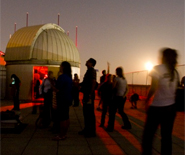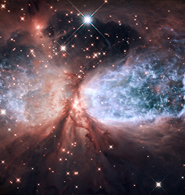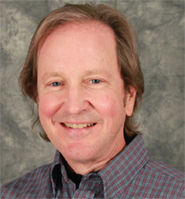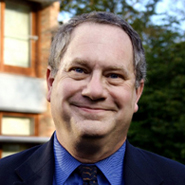Out of Class Events
Participation in certain out-of-class activities and events can be used to earn participation credits. These are equivalent to the participation credits obtained from exercises and activities that take place in class. Each activity is worth 0.5 points, but the cumulative total cannot exceed 10 points (20 items). Credits earned outside class require appropriate documentation (see details below), which must be turned in no more than two weeks after the activity or by the last class meeting, whichever comes earlier.
Star Parties
Earn participation credit by attending Astronomy Department-sponsored Star Parties, which occur on Wednesday, Friday, and Saturday evenings during the semester, weather permitting. The Wednesday night events are held on the roof of RLM Hall, while the Friday and Saturday ones use the telescope on the roof of Painter Hall. See details here. Important: You must request a signed slip from the person in charge, and turn it in to the T.A. within the next week to receive credit. A maximum of three Star Parties, each with proper documentation - the slip must have your name and EID as well as the signature of the Star Party host - may count towards your participation total.
"Truth and Beauty in Astronomy Visualization" - Public Lecture
Thursday, March 6, 7-8 PM, ECJ 1.202
Dr. Frank Summers, Space Telescope Science Institute
Dr. Frank Summers will showcase compelling visuals and describe techniques used in creating sequences for educational materials, press releases, planetarium shows, and IMAX films.
To receive credit for attending this lecture, you must turn in a brief, handwritten summary of what you heard and understood from the talk, on paper (absolutely no emailed reports) within two weeks.
"Small Stars in a Large Context" - Public Lecture
Saturday, February 22, 1:00 PM, POB 2.302 (Avaya Auditorium)
Prof. Don Winget, University of Texas at Austin
White dwarf stars, dubbed 'Impossible Stars' by Eddington, are the simplest stars known. We will examine the potential offered by white dwarf stars in the context of both astrophysics and fundamental physics... McDonald Observatory leads in investigating these stars from discoveries at the telescopes coupled with theoretical calculations to, most recently, the laboratory.
To receive credit for attending this lecture, you must turn in a brief, handwritten summary of what you heard and understood from the talk, on paper (absolutely no emailed reports) within two weeks.
"The Hidden Universe Revealed" - Public Lecture
Wednesday, February 19, 4:00 PM, CPE 2.208
Prof. Robert Kennicutt, University of Cambridge
Half of the starlight in the Universe is hidden from telescopes collecting in the visible spectrum. This talk will discuss new classes of objects and phenomena revealed by the international space observatories collecting in the infrared and terahertz region of the spectrum.
To receive credit for attending this lecture, you must turn in a brief, handwritten summary of what you heard and understood from the talk, on paper (absolutely no emailed reports) within two weeks.



